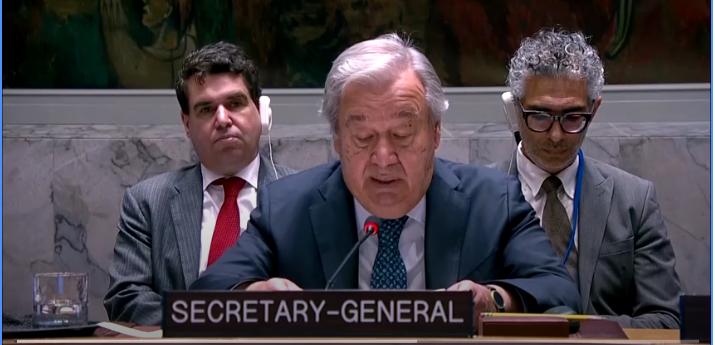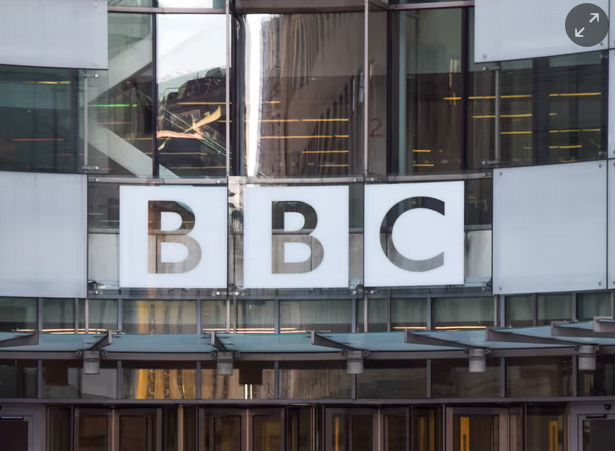
🌐 UN Condemns U.S. Strikes on Iran: Guterres Issues Stark Warning
June 22, 2025 — In response to the recent U.S. military strikes on Iranian nuclear facilities, United Nations Secretary‑General António Guterres voiced urgent concern, describing the escalation as “dangerous” and urging all parties to step back from the brink of a broader war. His remarks come amid growing clashes between Iran and Israel, now intensified by direct U.S. involvement via airstrikes on Fordow, Natanz, and Isfahan.
🕊️ Guterres’ Alert: “Risk of Spiral into Catastrophe”
During a public address and a UN Security Council briefing, Guterres said:
“There is a growing risk that this conflict could rapidly get out of control – with catastrophic consequences for civilians, the region, and the world.” (deccanherald.com, reuters.com, un.org)
He emphasized:
“At this perilous hour, it is critical to avoid a spiral of chaos. There is no military solution. The only path forward is diplomacy. The only hope is peace.” (deccanherald.com)
His message echoes earlier UN concerns after Israel’s initial strikes in June, which also drew warnings against expanding the conflict .
🇺🇳 Global Call for Restraint
Guterres’ appeal echoes across multiple countries:
- New Zealand: Foreign Minister Winston Peters said the current military escalation is “extremely worrying,” and urged a return to diplomacy (en.aletihad.ae).
- Australia: Government spokespeople echoed the call, noting the volatility of the region and saying “now is the time for peace” (en.aletihad.ae).
- Mexico, Cuba, Venezuela: All condemned the U.S. strikes as illegal under international law and demanded immediate de-escalation (channelnewsasia.com).
Even nations less involved directly are stressing diplomatic resolution—white it underscores the potential global consequences (en.aletihad.ae).
🔥 Timeline: Escalation to U.S. Intervention
- June 13–15: Israel initiated bombardment across Iran’s military and nuclear infrastructure—striking sites like Fordow and Natanz—triggering missile retaliation and civilian casualties (reuters.com).
- June 21–22: The U.S. joined the air campaign, striking side-by-side with Israel on three nuclear sites. President Trump later hailed the attacks as “spectacular military success” (dw.com).
- Immediately following, Guterres and the IAEA raised red flags about potential nuclear risks and heightened regional instability (apnews.com).
⚠️ Why the U.S. Role Intensifies the Threat
- De-escalation becomes harder: The UN warned that deeper U.S. involvement could provoke broader conflict—an “expansion risk” into Lebanon, Iraq, or the Strait of Hormuz .
- Legal doubts escalate: Observers and diplomats questioned whether the U.S. had the legal right to act without UN or congressional approval .
- Humanitarian fears: UN officials cautioned that civilian suffering could deepen, with mass displacement and possible refugee flows (theguardian.com).
- Nuclear risks: IAEA worried about accidental damage to reactor facilities and contamination, although no off-site radiation spikes have been detected (dw.com).
🌍 Other World Leaders Speak Out
- Israel’s PM Netanyahu: Applauded President Trump’s decision as a historic turning point against Iran’s nuclear dangers (dallasnews.com).
- China & Russia: China’s UN envoy condemned the U.S. strikes as a violation of Iranian sovereignty; Russia and other permanent UNSC members echoed calls for restraint (reuters.com).
- Europe (France, Germany, UK): Urged a return to diplomacy and re-opening of stalled nuclear talks (reuters.com).
- Regional voices: Turkey’s Erdoğan, Jordan, Japan, and Ireland appealed for diplomatic solutions to avoid further escalation (theguardian.com).
🕰️ What Happens Now?
| Next Steps | Likely Outcomes |
|---|---|
| UN calls for ceasefire | Diplomatic channels (EU, China, Russia) may convene peace talks |
| IAEA monitoring | No radiation spike yet—IAEA keeps close watch on nuclear safety |
| Public pressure | Mass protests in Tehran and European capitals add to de-escalation calls |
| Legal scrutiny | US Congress may challenge executive war powers |
| Potential counter-strikes | Iran may retaliate through proxies (Hezbollah, Houthis) |
✅ Key Takeaways
- UN Secretary-General warns: “There is no military solution… diplomacy is the only hope” (wsj.com, en.wikipedia.org, deccanherald.com).
- Global alarm: Widespread international condemnation and urgings to de-escalate follow U.S.’s military escalation.
- Nuclear risk remains: No detected contamination yet, but global watchdogs are on alert.
- Diplomatic moment: The world now faces a critical window—continue military tactics or pivot back to diplomacy.


